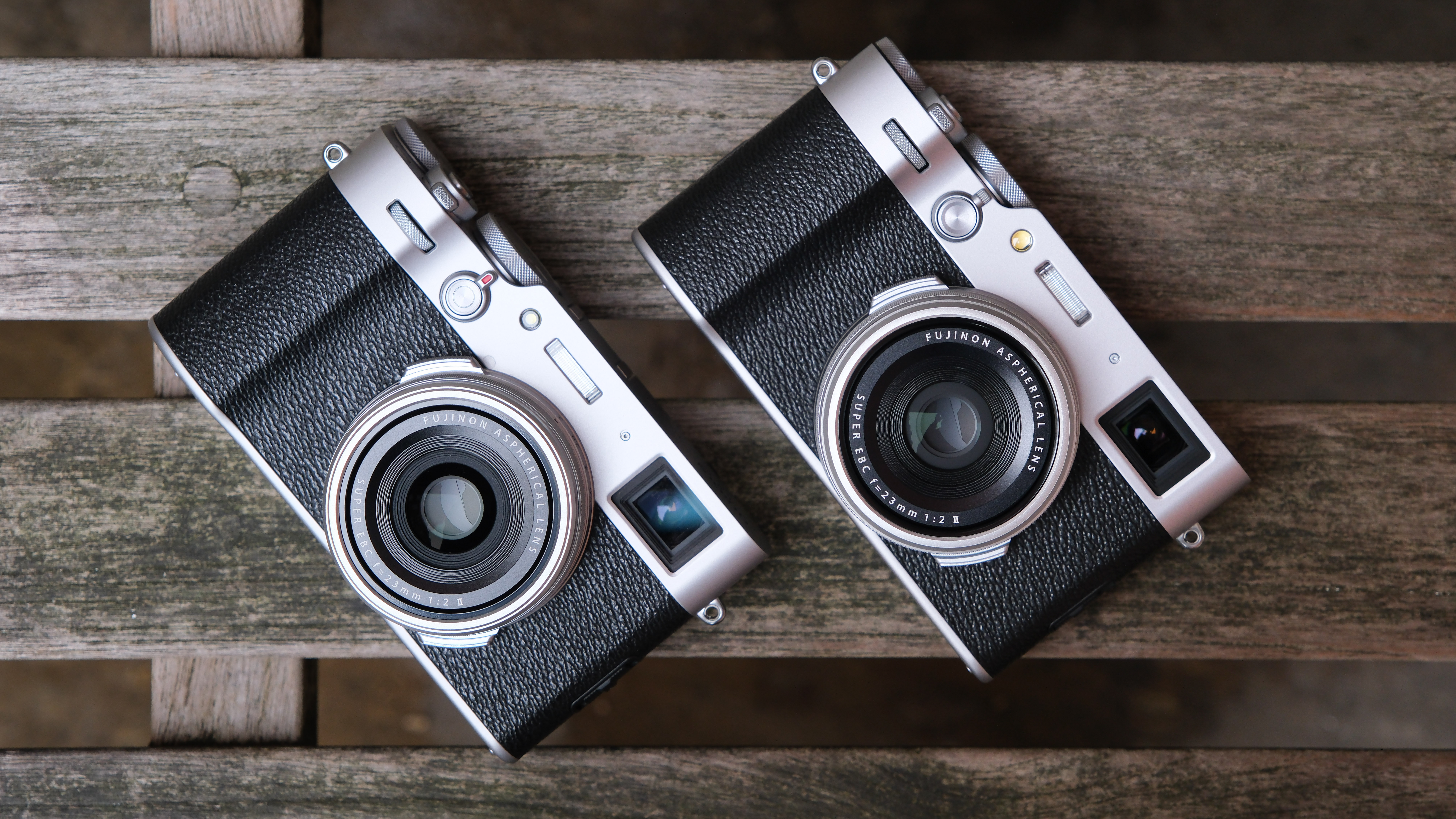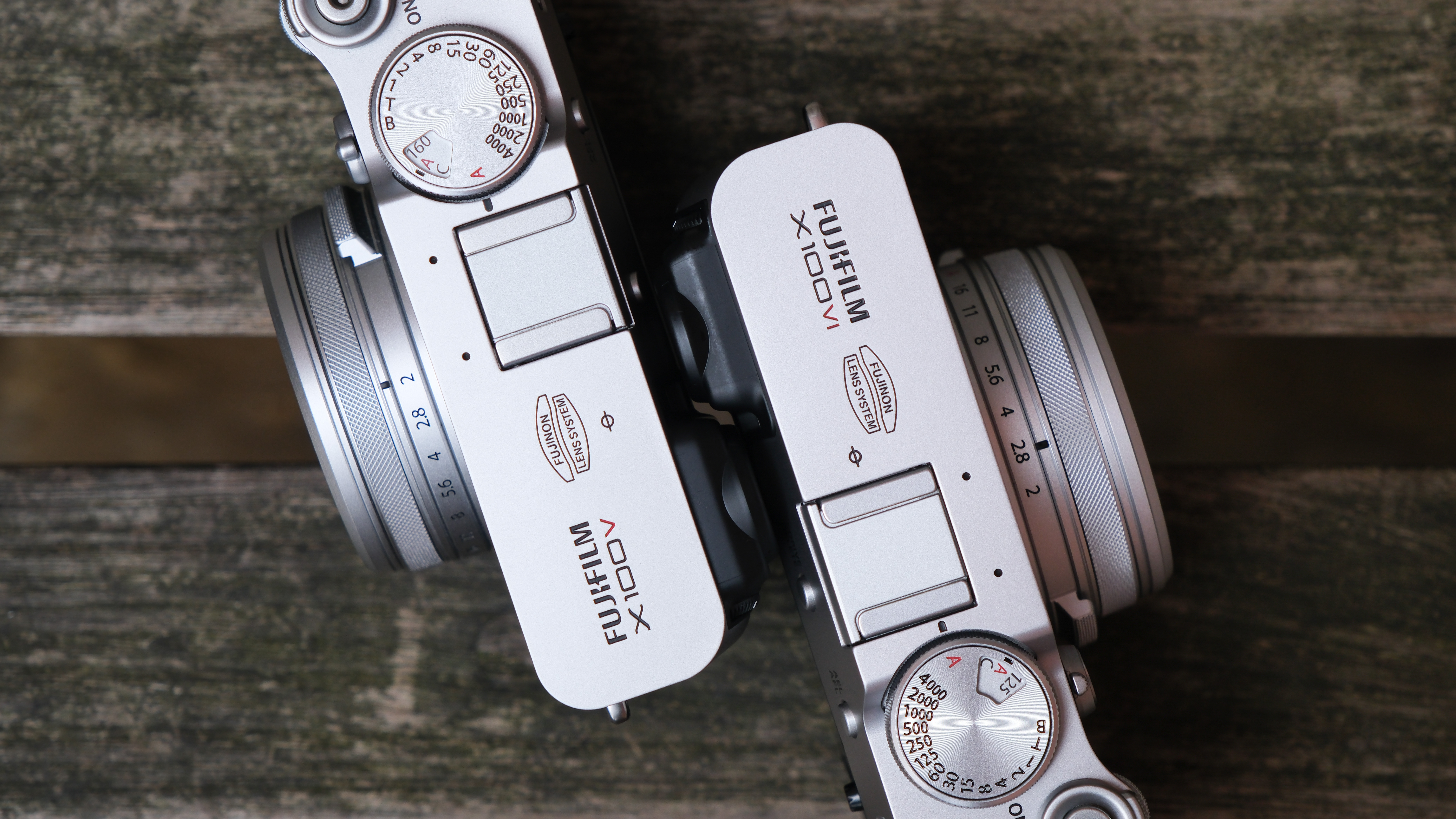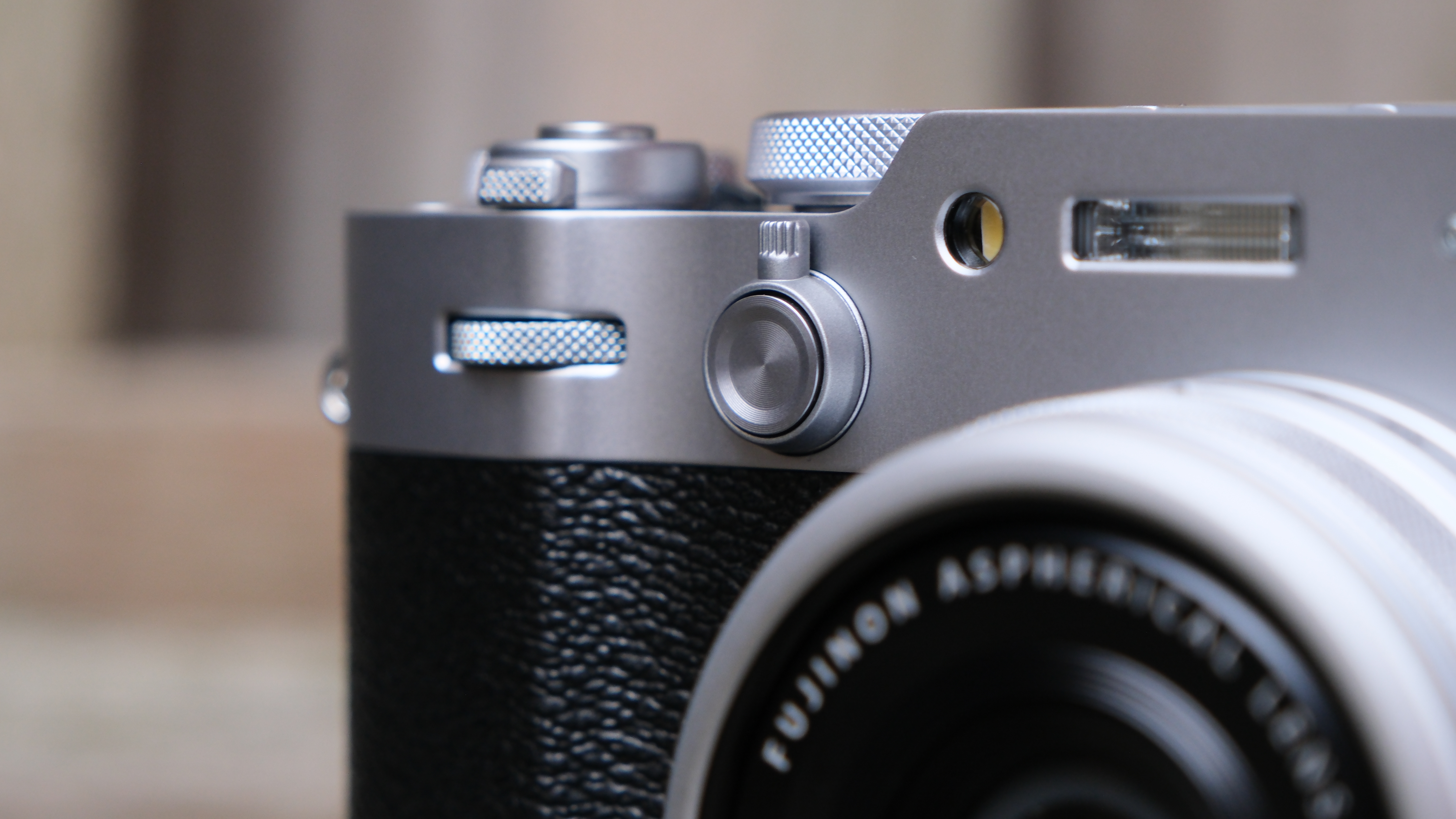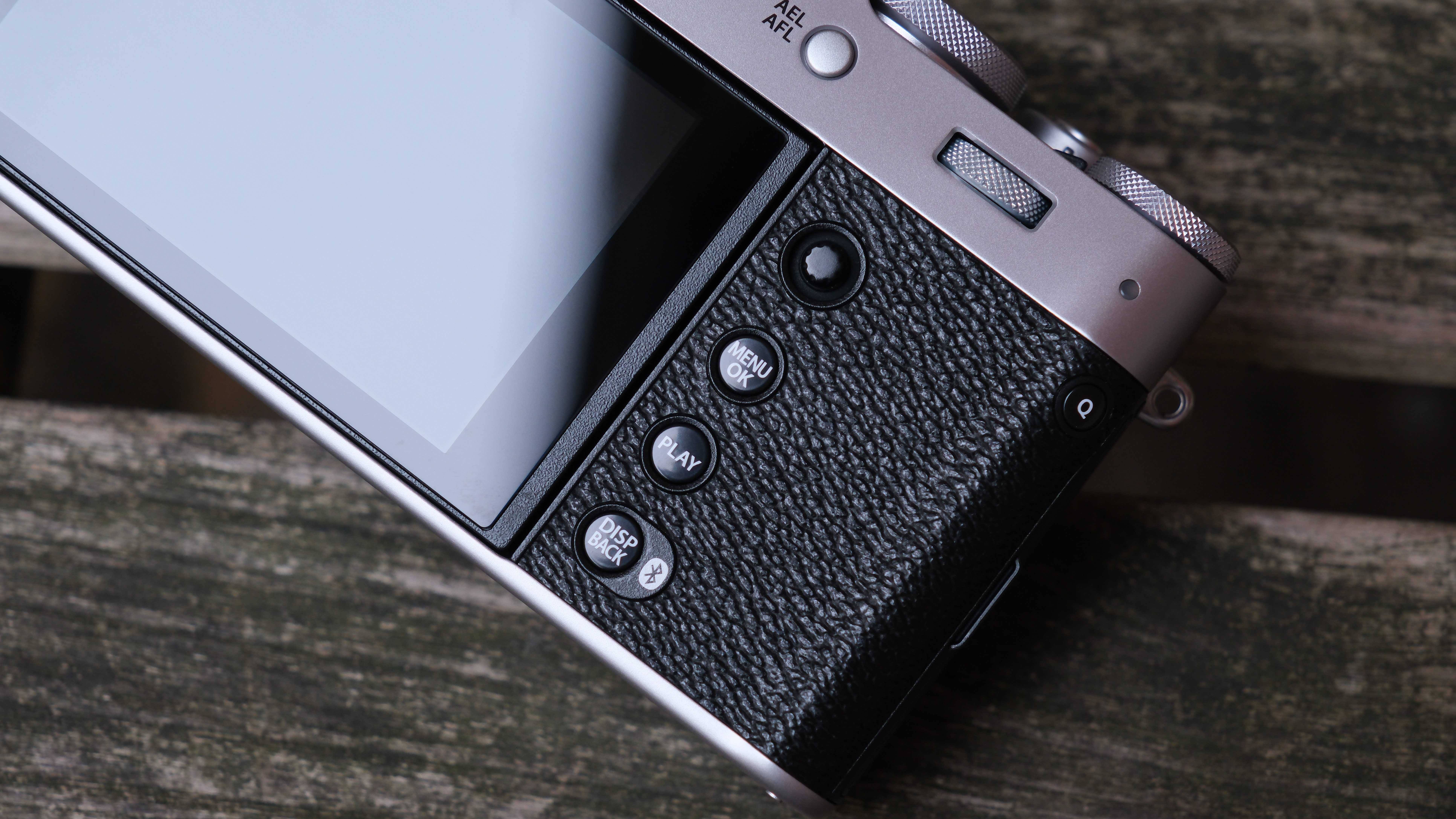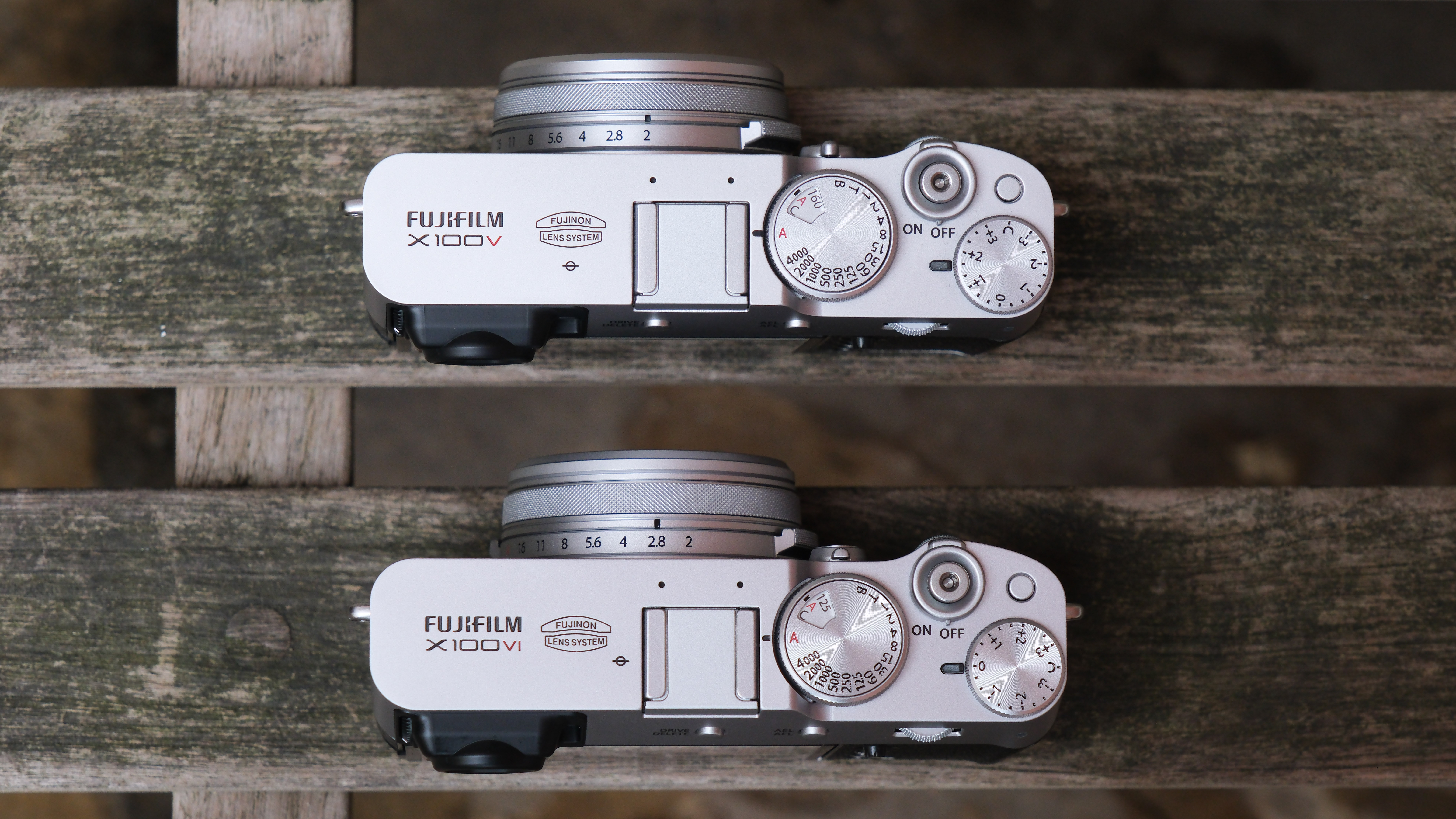Fujifilm X100VI vs X100V: comparing two generations of premium compact
Comparing two generations of premium compact camera… Fujifilm X100VI vs X100V – which comes out on top?
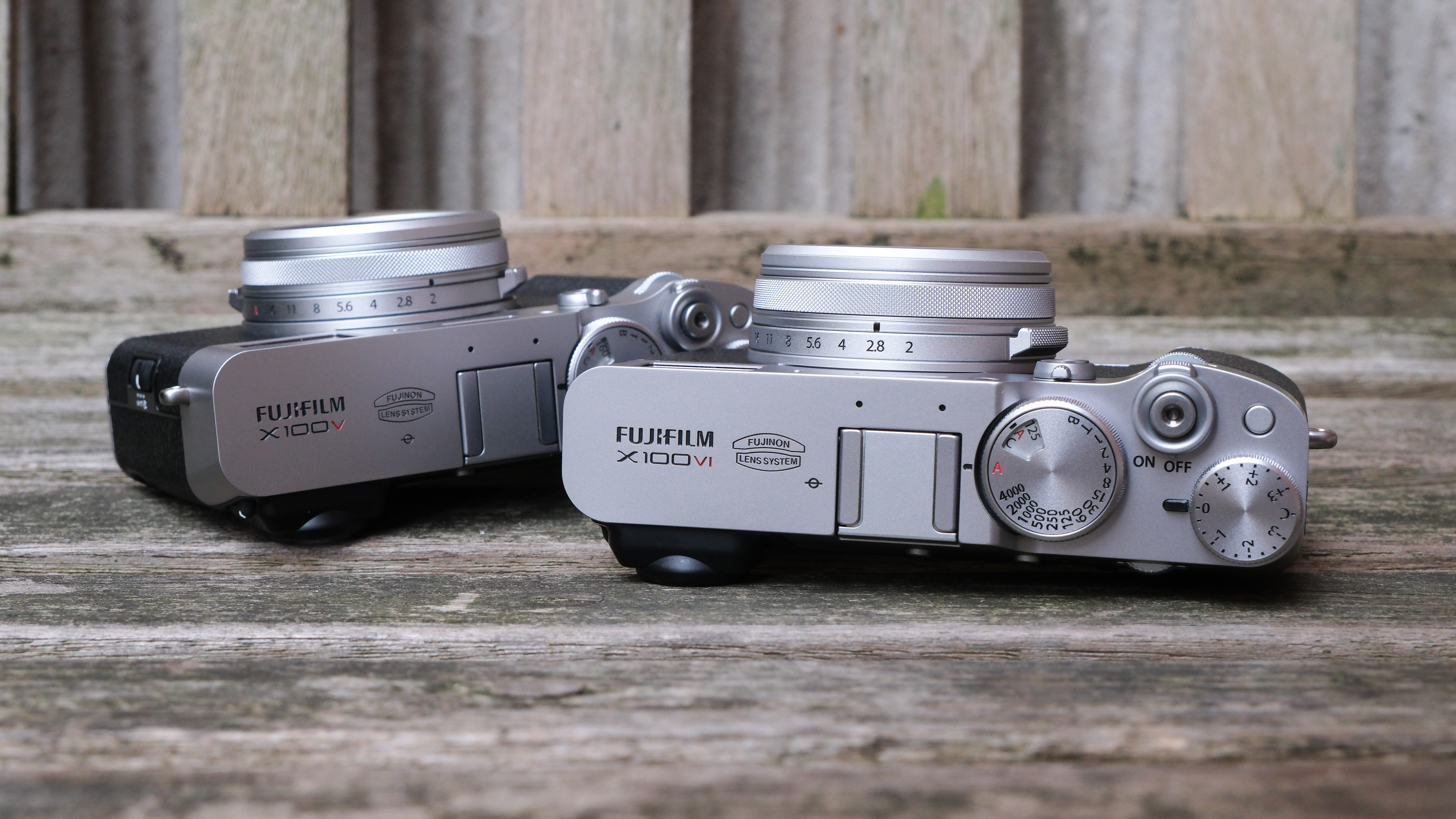
At first glance, it might be hard to tell that much has changed with the latest X100 camera – so the Fujifilm X100VI vs X100V comparison is an intriguing one.
The body is nearly identical, the lens is the same fixed 23mm focal length, and the cameras have the same dials and ports. It's only when you get under the hood of the Fujifilm X100VI that you can start to see some daylight between the two models.
So what exactly has changed in Fujifilm's premium compact and TikTik icon? Let's dig into the differences below and work out which is the right option for you.
| Header Cell - Column 0 | Fujifilm X100VI | Fujifilm X100V |
|---|---|---|
| Sensor | 40.2MP X-Trans CMOS 5 HR sensor | 26.1MP X-Trans CMOS 4 |
| Processor | X-Processor 5 | X-Processor 4 |
| Image format | RAW, HEIF, JPEG | RAW, JPEG |
| Video | 6.2K30p (1.23x crop), 4K60p, Full HD up to 240p | 4K30p, Full HD up to 120p |
| IBIS | Up to 6.0 stops | None |
| ISO | 125-12,800 (51,200 expanded) | 160-12,800 (51,200 expanded) |
| Continuous Shooting | 20fps (electronic shutter - 1.29x crop), 11fps (mechanical shutter) | 30fps (electronic shutter - 1.25x crop), 11fps (mechanical shutter) |
| Buffer (electronic shutter) | JPEG 117 frames, Compressed RAW 52, Compressed RAW + JPEG 25 frames | JPEG 79 frames, Compressed RAW 17 frames |
| Buffer (mechanical shutter) | JPEG 38 frames, Compressed RAW 33 frames, Compressed RAW+JPEG 28 frames | JPEG 38 frames, Compressed RAW 17 frames |
| Film Simulations | 20 | 17 |
| Battery | NP-W126S | NP-W126S |
| Weight | 521g (incl battery and SD) | 478g (incl battery and SD) |
| Size (WxHxD) | 128 x 74.8 x 55.3mm | 128 x 74.8mm x 53.3mm |
| Launch Price | $1,599 | $1,349 |
Sensor
X100VI: 40.2MP X-Trans CMOS 5 HR sensor
X100V: 26.1MP X-Trans CMOS 4
While both cameras have APS-C sizes sensors, the biggest difference between the two is resolution. The newer X100VI has the manufacturer's latest 40.2MP sensor, which has featured in its most recent and best cameras like the Fujifilm X-H2 and Fujifilm X-T5. This sensor set a new bar for resolution in APS-C and has 66% more pixels than the 24.1MP sensor in the X100V.
Why does this matter? Well, more resolution means you can crop further into your images – which is more important than ever, with the X100 series' lens having no optical zoom. With the newer X100VI sensor, you can digitally crop into 70mm and still get 10MP images.
The increased resolution also enables you to print larger, with 40.2MP comfortably producing large-sized photos for exhibiting or displaying at home.
Processor
X100VI: X-Processor 5
X100V: X-Processor 4
A better processor can mean a lot of things, including faster buffer speeds, better noise reduction, better video processing, improved autofocus tracking, and just generally a quicker camera in use. The new camera delivers on most of these over its predecessor.
The X100VI adds human face and eye, animal, bird, insect, vehicle, and drone recognition and tracking to its autofocus system, while the X100V only has human face and eye detection, although using older algorithms. The latest detection algorithms have already been deployed in the company's pro lineup of cameras including the Fujifilm X-H2S and GFX 100 II.
The buffer (the number of consecutive photos) has also increased; when it comes to shooting JPEGs using the electronic shutter, the X100VI is capable of 117 compared to the X100V's 79, and 52 RAW images from 17. The buffer rate with the mechanical shutter, however, remains the same between the two generations.
The older X100V has a slight advantage when it comes to shooting speed, capable of 30fps, besting the X100VI's top speed of 20fps (both electronic shutter only). This is likely due to the newer camera pushing through more megapixels and working the processor harder. As the X100 series is not really a sports or wildlife camera – in reality, this is less likely to matter.
Video
X100VI: 6K 30p (1.23x crop), oversampled 4K 30p (1.23x crop), 4K 60p, FullHD 240p
X100V: 4K 30p, FullHD 120p
While the X100 series is not the first choice for serious videography, but if you're keen to capture video as much as still imagery then this is when the cameras really diverge – and the X100VI becomes the clear and obvious choice.
The X100VI steps things up considerably with 6.2K video at up to 30p, which tops the limits of the X100V's 4K 30p video. The X100VI also has a mode to oversample 6.2K video and save it has higher quality 4K footage. The only downside to both of these modes on the X100VI is that they come with the penalty of a small 1.23x crop – making the lens a 28mm instead of 23mm. The X100VI is also capable of recording 4:2:2 10-bit footage for better editing flexibility.
The final string in the X100VI's video bow is the inclusion of in-body image stabilization (the X100V has none), a real boon for video shooting, which we will move onto below…
Image Stabilization
X100VI: Up to 6.0 stops
X100V: None
Fujifilm has managed to squeeze in-body image stabilization (IBIS) into the X100VI and only made the camera just a touch bigger (we're talking mere millimeters). This is a huge improvement over the previous model, considering the X100V has no stabilization to speak of.
IBIS allows for steadier shots in low light when shutter speeds need to be slower, or balancing the camera when using long lenses – with the X100VI claiming you can drop the shutter speed up to 6.0 stops lower than you could without. IBIS is also a huge benefit to video, as it corrects some of the handheld shake you get while trying to hold the camera steady or perform a slow pan.
However, if you don't shoot video, and tend to only take photos in good light with small lenses, then image stabilization may be of limited importance to your work.
Conclusion
X100VI RRP: $1,599
X100V RRP: $1,349
So that's a quick roundup of the best new features in the new Fujifilm X100VI vs the X100V – but should you upgrade? It's a tricky one as, while the X100VI is an across-the-board spec improvement over the X100V, it's not a dramatic enough leap in technology that I'd recommend rushing out to get the newer model. The X100V certainly doesn't feel old or outdated, with the sensor and lens still capable of producing some stunning images for years to come.
If you are looking for your first X100 series camera, the X100VI is the easiest choice. You can actually buy it new from a store (the X100V is now discontinued) and it will futureproof you more, as it will remain competitive with newer models for longer, and will likely receive firmware updates for the next few years.
However, if cost is a concern, you may be able pick the older X100V model up second-hand for less – although the camera has really held its value. If you are also not sure how well you will get on with a fixed-lens compact camera, then getting a cheaper model can be a better way to test the water before committing to the more expensive X100VI.
Take a look at the best compact cameras, which at the premium end includes some of the best Fujifilm cameras and best Leica cameras.
The best camera deals, reviews, product advice, and unmissable photography news, direct to your inbox!

Gareth is a photographer based in London, working as a freelance photographer and videographer for the past several years, having the privilege to shoot for some household names. With work focusing on fashion, portrait and lifestyle content creation, he has developed a range of skills covering everything from editorial shoots to social media videos. Outside of work, he has a personal passion for travel and nature photography, with a devotion to sustainability and environmental causes.
